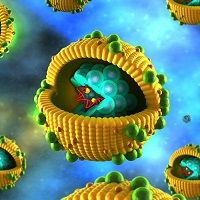Team Tracks Hepatitis C Virus Mutations
Researchers applied a new technique to investigate the hepatitis C virus (HCV) genome, and gained insights into the extreme mutability of the virus.

Researchers applied a new technique to investigate the hepatitis C virus (HCV) genome, and gained insights into the extreme mutability of the virus. The research was conducted by Ron Geller, PhD, of the Cavanilles Institute of Biodiversity and Evolutionary Biology and the Institute for Integrative Systems Biology at the University of Valencia in Valencia, Spain, and colleagues. It was published in Nature Microbiology on April 18, 2016.
Mutations are important because they allow for evolution and adaptation. In the case of viruses, understanding mutations means being able to develop effective vaccines. There are various ways to determine viral mutation rates, however, it is a challenging task. The authors say that “ a variety of methods have been devised to quantify viral mutation rates” but that those methods have been problematic.
In this study, the researchers described their approach, saying, “Here, using a modified HCV replicon system in combination with a recently developed high-fidelity ultradeep sequencing technology, we scored 16,133 different spontaneous mutations occurring in more than 90% of the HCV genome.” They go on to say that their work “reveal extensive variations across the viral genome.”
The researchers noted that there were “no large-scale mutation rate trends,” leading them to suggest the possibility that “RNA viruses do not have the ability to target mutations to genome regions in which they are most likely needed for adaptation.” Although they did observe some uncommon changes, the researchers said, “Like the vast majority of biological systems examined, the HCV mutational repertoire was dominated by transitions.”
This study provides what the authors describe as “a genome-wide picture of the HCV mutational landscape.” Such a picture could be useful “for interrogating natural selection, genetic load and evolvability, as well as drug resistance and immune evasion.” The authors suggest that future work should focus on viral diversity in order to learn more about among-site mutation rate variation.